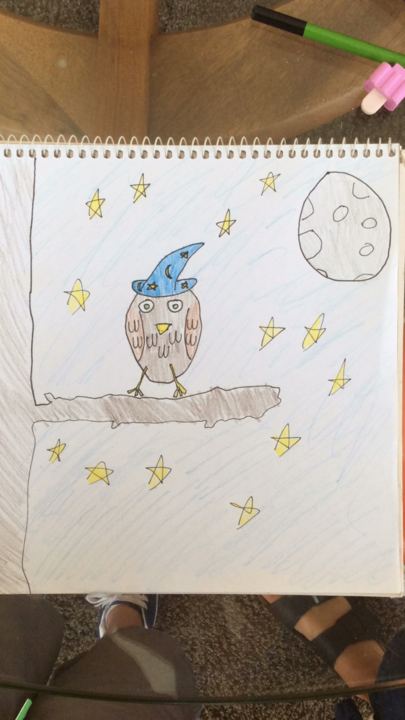Draw a magical pet for a wizard
Draw and color a magical pet for a wizard, invent its powers, habitat, and backstory while practicing observation and creative storytelling skills.


Step-by-step guide to draw a magical pet for a wizard
FULL EPISODE: How to Draw A Hippo Lion! | Draw My Dream Pet | Dr. Seuss
Step 1
Choose one or two real animals to study for two minutes.
Step 2
Look closely at the animals and notice their shapes textures and special features.
Step 3
Choose the type of wizard your pet will belong to such as forest ice or storm.
Step 4
Give your magical pet a name.
Step 5
Lightly sketch the pet’s basic body shape on paper using your pencil and the animal features you liked.
Step 6
Add one clear magical feature to your sketch like glowing wings a floating tail or a crystal horn.
Step 7
Draw the habitat background where your pet lives using simple shapes.
Step 8
Write two short sentences that each describe one special power your pet has.
Step 9
Write a short backstory in two or three sentences explaining how your pet met its wizard and why it protects them.
Step 10
Choose the colors you will use for your pet and its habitat.
Step 11
Color in your pet and the background neatly using your coloring materials.
Step 12
Outline your drawing with a black marker or pen and add small finishing details like sparkles or fur lines.
Step 13
Sign and date your artwork in a corner.
Step 14
Share your finished magical pet creation on DIY.org
Final steps
You're almost there! Complete all the steps, bring your creation to life, post it, and conquer the challenge!


Help!?
What can we use if we can't observe live animals or don't have a black marker or fancy coloring supplies?
Use photos, videos, or stuffed animals for the two-minute animal study and swap the black marker for a dark pen or thin paintbrush and the coloring materials for crayons, colored pencils, or watercolors you already have.
My sketch looks messy or the colors smudge—how do I fix common drawing and coloring problems?
Lightly sketch the pet's basic body shape with a pencil and adjust before adding the magical feature, color in layers letting each layer dry if using paint, and outline last with your black marker or dark pen to hide small mistakes.
How can I adapt this activity for younger children or older kids who want more challenge?
For younger children simplify by using one familiar animal, big simple shapes, one magical feature, and have an adult write the two power sentences, while older kids can combine two animals, add detailed textures and habitat shapes, choose a more complex color palette, and write a longer three-sentence backstory.
What are fun ways to extend or personalize our magical pet after finishing the drawing?
Turn the artwork into a mini-book or cardboard diorama, add mixed media like fabric or glitter to emphasize the glowing wings or crystal horn, photograph it and record the pet's backstory as a short video to upload to DIY.org, and don't forget to sign and date it.
Watch videos on how to draw a magical pet for a wizard
How to Draw a Duck dressed like a wizard with a wand and hat | Magic Glitter Coloring
Facts about drawing and storytelling for kids
✨ In stories a magical pet's powers often reflect its wizard's personality—brave wizards get bold guardians, shy ones get sneaky companions.
🎨 Artists love mixing animal parts to invent magical creatures, like a fox with wings or a rabbit with antlers.
📚 Giving your pet a backstory (name, origin, favorite snack, secret quirk) instantly makes it feel real and fun to draw.
🌍 Mythical pets appear in stories worldwide—some cultures have flying horses while others have water spirits as companions.
🐈⬛ Many cultures imagined wizards with animal companions called familiars—cats, ravens, and toads were popular choices.
How do I draw and invent a magical pet for a wizard?
What materials do I need to draw a magical pet for a wizard?
What ages is drawing a magical pet for a wizard suitable for?
What are the benefits of drawing a magical pet for a wizard?


One subscription, many ways to play and learn.
Only $6.99 after trial. No credit card required



